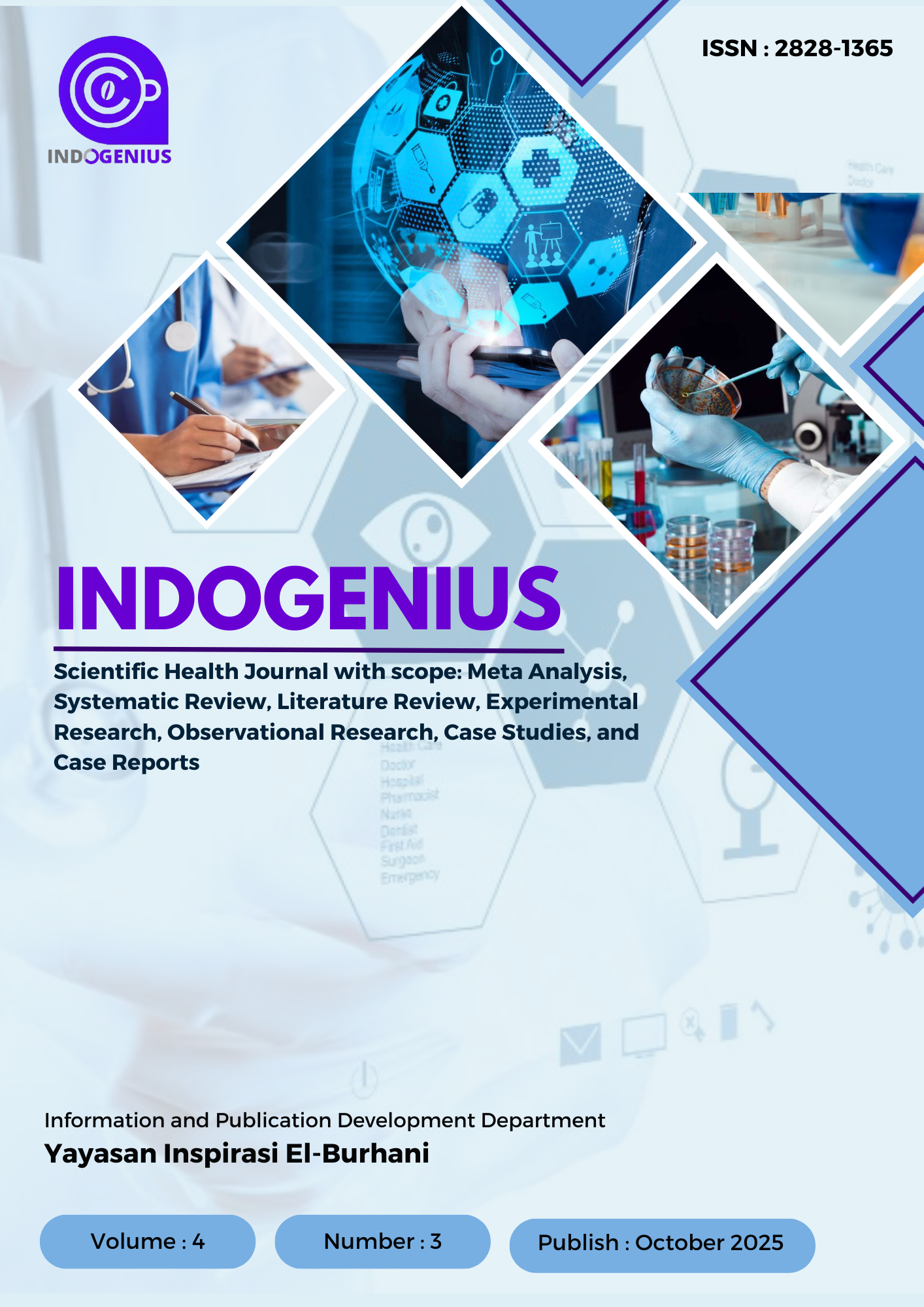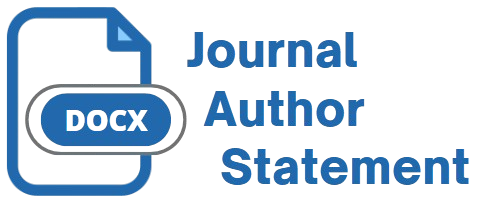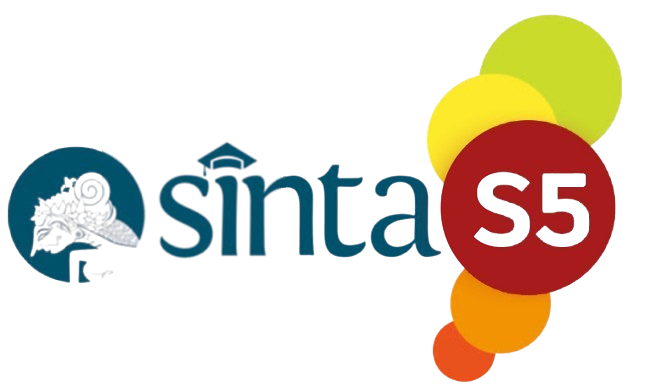Relationship Between Sodium Consumption Patterns and Hypertension Incidents in the Elderly in the Work Area of the Wirang Public Health Center
DOI:
https://doi.org/10.56359/igj.v4i3.789Keywords:
Education, Elderly, Hypertension, Medication Adherence, MMAS-8Abstract
Background & Objective: Hypertension is a common health issue among the elderly, with prevalence increasing as age advances. According to the WHO, approximately 1.13 billion people worldwide suffer from hypertension, with the elderly being the most vulnerable group. Poor hypertension management can lead to serious complications such as stroke, heart failure, and chronic kidney disease. Medication adherence is crucial in preventing such complications. However, elderly individuals with low educational attainment often struggle to understand medical instructions and the importance of consistent medication use. This study aims to analyze the relationship between education level and adherence to hypertension treatment among the elderly in the working area of Puskesmas Datah Kotou, Puruk Cahu.
Method: This study used a quantitative research design with a cross-sectional approach. The sample consisted of 30 elderly individuals diagnosed with hypertension. Data were collected using a questionnaire measuring education level and adherence, assessed through the Morisky Medication Adherence Scale (MMAS-8). Correlation analysis was used to evaluate the data.
Result: A total of 83.3% of respondents had a low level of education (elementary school), and 63.3% showed low adherence to treatment. Statistical analysis revealed a significant relationship between education level and treatment adherence, with a correlation coefficient of 0.691 and a p-value of 0.000.
Conclusion: The study concludes that education level significantly affects the adherence of elderly individuals to hypertension treatment, highlighting the need for more effective health education interventions.
Downloads
References
Fitriani, N. & Widodo, A. (2023). Peran keluarga dalam pengaturan pola makan lansia penderita hipertensi. Jurnal Gizi dan Kesehatan Indonesia, 12(1), 55–62.
He, F.J. & MacGregor, G.A. (2018) ‘Reducing population salt intake worldwide: from evidence to implementation’, Progress in Cardiovascular Diseases, 61(1), pp. 94–98.
Husna, R., Ramadhan, R.A. & Pratama, A.Y. (2023). Perbedaan harapan hidup berdasarkan jenis kelamin di Indonesia. Jurnal Kependudukan Indonesia, 19(2), 110–119.
Jayedi, A., Zeraattalab-Motlagh, S., Jabbarzadeh, F. & Shab-Bidar, S. (2020). Dietary sodium intake and blood pressure: A dose-response meta-analysis of prospective cohort studies. Nutrition Journal, 19(1), 1–10.
Kementerian Kesehatan Republik Indonesia. (2023). Profil Kesehatan Indonesia Tahun 2023. Jakarta: Kemenkes RI.
Lubis, M.R., Siregar, L.A. & Handayani, N. (2021). Prevalensi dan faktor risiko hipertensi pada lansia di Sumatera Utara. Jurnal Kesehatan Masyarakat, 16(3), 215–222.
Ningsih, A.D. & Lestari, S.A. (2022). Pola pengelolaan hipertensi pada lansia: studi observasional di Puskesmas. Jurnal Kesehatan Masyarakat, 17(2), 145–152.
Rahman, H., Purnama, A. & Dewi, M.S. (2021). Kesadaran lansia terhadap hipertensi dan peran keluarga dalam pengendaliannya. Jurnal Geriatri Indonesia, 8(1), 33–40.
Rahmawati, N., Astuti, I. & Pramesti, Y.A. (2022). Cultural dietary habits and sodium intake among elderly: a community-based qualitative study. Jurnal Kesehatan Komunitas, 8(3), 155–162.
Rahmawati, N., Yuliana, I. & Susanti, W. (2022). Masalah kesehatan pada lansia perempuan pasca menopause. Jurnal Gizi dan Kesehatan Indonesia, 11(1), 43–50.
Rosdiana, D. & Santoso, H. (2021). Analisis gender dalam harapan hidup lansia di Indonesia. Jurnal Demografi, 8(2), 77–85.
Safitri, E. & Andini, R. (2020). Partisipasi sosial lansia dalam kegiatan komunitas di desa. Jurnal Ilmu Sosial dan Humaniora, 9(1), 53–60.
Saleh, A.O. & Majeed, F. (2021) ‘The Effect of Salt Reduction on Hypertension Control in Elderly Patients: A Quasi-Experimental Study’, Global Geriatric Health Journal, 12(3), pp. 210–218.
Santoso, R., Handayani, S. & Mahendra, Y. (2022). Hubungan konsumsi natrium dengan tekanan darah pada lansia. Jurnal Kesehatan Masyarakat, 18(2), 123–130.
Sari, N.W. & Wardhani, M.S. (2020). Hubungan antara pola makan dengan kejadian hipertensi pada lansia di daerah urban. Jurnal Gizi dan Dietetik Indonesia, 8(2), 91–97.
Setiawan, E. & Nuraini, N. (2021). Pengaruh penurunan fungsi ginjal terhadap tekanan darah lansia. Jurnal Keperawatan Lansia, 5(2), 78–85.
Setiawan, E., Rahayu, T. & Astuti, R. (2021). Perubahan fisiologis lansia dan implikasinya terhadap tekanan darah. Jurnal Keperawatan Lanjut Usia, 6(3), 101–108.
Setiawan, I., Salma, U. & Ramadan, R. (2021) ‘Hubungan Asupan Natrium dengan Risiko Hipertensi di Kalangan Lansia’, Jurnal Gizi dan Pangan, 6(1), pp. 99–107.
Wahyuni, D. & Herlina, S. (2021). Pengetahuan lansia tentang garam dan implikasinya terhadap hipertensi. Jurnal Gizi Masyarakat, 6(3), 44–50.
World Health Organization. (2021). Guideline: Sodium intake for adults and children. Geneva: WHO.
World Health Organization. (2022). Hypertension. [Online] Available at: https://www.who.int/news-room/fact-sheets/detail/hypertension [Accessed 15 May 2025].
Downloads
Published
How to Cite
Issue
Section
License
Copyright (c) 2025 Erma Wiliani, Rian Tasalim, Latifah, Angga Irawan

This work is licensed under a Creative Commons Attribution 4.0 International License.

















